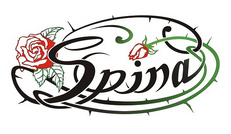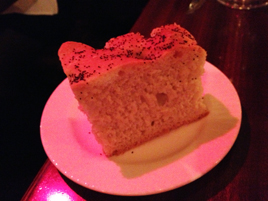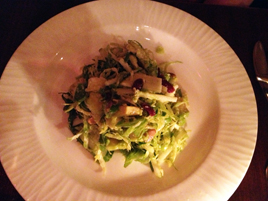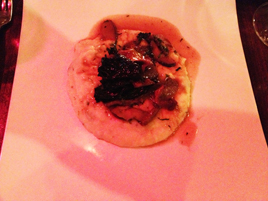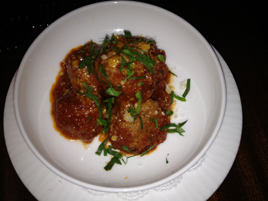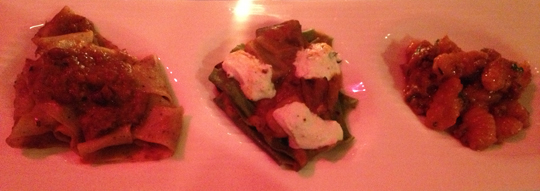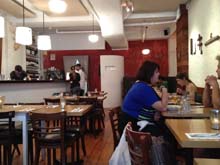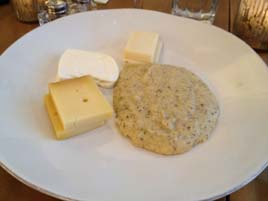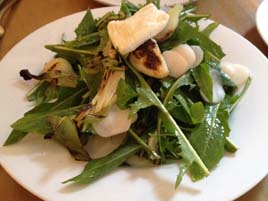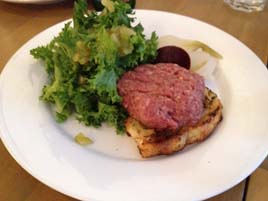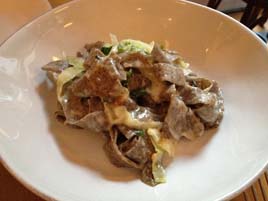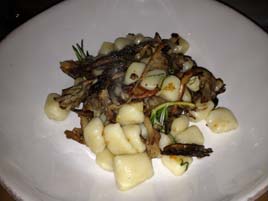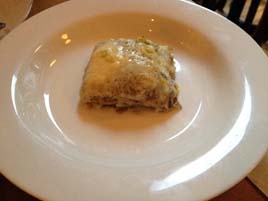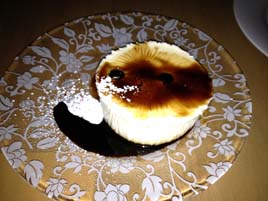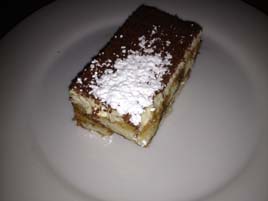Sushi Dojo
 Wednesday, September 11, 2013 at 05:52PM
Wednesday, September 11, 2013 at 05:52PM 

Note: This review was written when David Boudahana was Executive Chef at Sushi Dojo. The owners fired him in late 2015 after a series of run-ins with the Department of Health. The restaurant’s other sushi chefs were excellent, so the restaurant should be able to keep running without missing a beat.
*
 Was I imagining it, or have we entered a Golden Age of Japanese cuisine in New York? New York’s Adam Platt seems to agree: this week, he posted a roundup of six new entrants—and he still didn’t manage to hit all of them.
Was I imagining it, or have we entered a Golden Age of Japanese cuisine in New York? New York’s Adam Platt seems to agree: this week, he posted a roundup of six new entrants—and he still didn’t manage to hit all of them.
I won’t have the time or the money for such an extensive survey. If I could only do one, I wasn’t sorry that it was Sushi Dojo, which opened in the East Village in early June and was an instant hit.


The chef getting all the press is an unlikely one: 27-year-old David Bouhadana (above left), a Jewish kid from Florida who trained with Iron Chef Morimoto and apprenticed for four years in Japan. To this gaijin’s ears, his Japanese sounds like the real McCoy. (I remember him vaguely from Sushi Uo, where he worked briefly in 2009.) Joining him are Hiromi Suzuki (one of the few female sushi chefs in New York) and Makato Yoshizawa, the only one of the group born and raised in Japan.
The restaurant’s name, loosely translated, means “Sushi Education.” The chefs will talk about their fish until you’re ready for a Ph.D., but they can leave you alone, if you’d prefer. It would be pretentious to suggest that you can’t get your education elsewhere, but these chefs are more talkative (in a good way) than many others I’ve encountered.
There’s a menu of hot dishes from the kitchen, sushi and sashimi à la carte, and omakases at escalating prices. On the evening we were there, the top omakase was $80 per head (since raised to $90), which compares favorably to $135 at Neta a few months ago. Ingredients are everything in sushi: much of the bill at Neta was taken up with an insane serving of toro tartare and caviar, which is $48 all by itself when ordered separately.
The sushi itself at Neta was pedestrian; here, it’s the highlight of the meal. The chef said that about 70 percent of the fish they serve is imported from Japan, with the rest sourced from the likes of Boston, New Zealand, Montauk, San Francisco, and so forth. In our omakase, I thought the ratio was more like 50/50.


There are about 40 sakes on the menu. We discussed our preference with the sommelier, who brought out a selection of three for us to try, and then steered us to an inexpensive choice. We ordered the $80 omakase with Chef Suzuki (above right), and she went to work. A poached South African ocotpus (upper left of photo) had just come steaming out of the oven.


We started (above left) with a few pieces of that octopus; tuna tartare with wasabi, soy, and yam; and a British Columbia oyster. Then came a selection of sashimi (above right) with shrimp, hamachi, tuna, and yellowtail.


The heads of the shrimp were sent to the kitchen, and came back deep fried (above left). This is a terrific dish, if you don’t mind the gross-out factor. I’ve always eaten shrimp heads, but I realize that many people don’t.
The planned omakase included five pieces of sushi: madai, golden eye snapper (Japan), shimaji (Japan), Tasmanian trout, and fatty tuna otoro (Boston). I’ve shown the trout (above right); you can see every piece in the slide show below.


We didn’t feel quite ready to be done, so we ordered five extra pieces. A scallop (above), seared with the blowtorch and finished with soy and yuzu zest, was one of the highlights. We also enjoyed the Japanese spotted sardine, salted and cured; the Santa Barbara sea urchin; sea eel; and seared fatty tuna with lemon juice and salt.
The omakase did not include dessert or anything from the kitchen, aside from the deep-fried shrimp heads. If our experience is any guide, you’ll probably want a bit more. (The kitchen sent out a pot of tea in a clay pot, which does not normally come with it.) I ought to add that we dined at the publicist’s invitation, and although we paid for our meal, it was at a discounted rate.
There are 36 seats, which were mostly full by 9:00 pm (when we were wrapping up), but only 14 at the bar. As usual for such establishments, you need to sit at the bar to get the most out of the experience, or should I say, the education.
If you want sushi around here, the sky’s the limit. At Kurumazushi, you can spend $1,000 in 45 minutes, and they’ll serve you slabs of imported otoro the size of porterhouse steaks. Sushi Dojo occupies a more rational sphere. In its price range, it is one of the better Japanese meals I’ve had in New York.
Sushi Dojo (110 First Avenue at E. 7th Street, East Village)
Food: Sushi front and center
Service: Personalized service from one of three sushi chefs
Ambiance: Austere but not too serious, in the traditional blond wood
Rating: ★★





















